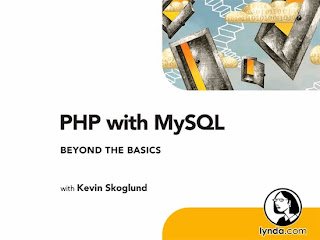
Topics include:
- Defining and using classes, methods, and attributes
- Understanding class inheritance and access modifiers
- Working with files and directories
- Uploading files to a server via forms
- Sending emails with PHP
- Using pagination and View templates
Table of content
Introduction
- Introduction (updated)
- Using the exercise files
PHP Overview
- What is PHP?
- History
- Why choose PHP?
- Installation overview
Mac Installation
- Installing on Mac 10.4 (Tiger) (update)
- Installing on Mac 10.5 (Leopard) (updated)
- Configuring
- The text editor
- phpMyAdmin
Windows Installation
- Installing
- Configuring
- The text editor
First Steps
- Viewing PHP configuration information
- Embedding PHP
- ”Hello World!”
- The operational trail
- Inserting comments
Exploring Data Types
- Variables
- Strings
- String functions
- Numbers pt. 1: Integers
- Numbers pt. 2: Floating points
- Arrays
- Array functions
- Booleans and NULL
- Type switching and casting
- Constants
Control Structures Pt. 1: Logical Expressions
- If statements
- Else and elseif statements
- Logical operators
- Switch statements
Control Structures Pt. 2: Loops
- While loops
- For loops
- Foreach loops
- Continue
- Break
- Understanding array pointers
User-Defined Functions
- Defining functions
- Using functions
- Returning values from a function
- Setting global variables
- Setting default values
Debugging
- Debugging and troubleshooting
Building Web Pages
- Links and URLs
- Using GET values
- Encoding GET values
- Encoding for HTML
- Building forms
- Setting cookies
- Establishing sessions
- Headers and page redirection
- Including and requiring pages
MySQL Basics
- MySQL introduction
- Creating a database in MySQL
- Populating a MySQL database
- phpMyAdmin
- Connecting to MySQL with PHP
- Accessing data in MySQL with PHP
Building a Content Management System
- Blueprinting your application
- Building the CMS database
- Understanding relational databases
- Establishing your work area
- Creating your first page
- Making page assets reusable
- Connecting your site to a database
- Building dynamic navigation
- Refactoring the navigation
- Adding links to your navigation
- Determining which page is selected
- Displaying HTML based on the selection
Application CRUD
- Finding a subject in the database
- Finding a page in the database
- Creating a page for a new subject
- Creating a subject entry form
- Adding subjects
- Escaping values for MySQL
- Form validation
- Additional form validation
- Editing a subject
- Using single-page submission
- Updating a subject in the database
- Sending form results as messages
- Deleting a subject
- CRUD review and assignment
- CRUD assignment results
- The public appearance
- Navigation in the public context
- Functions in the public context
- Creating a default subject behavior
- Text encoding and transforming
- User access overview
- Encryption
- Creating a login system
- Checking authorization
- Using sessions to maintain login status
- Creating a logout page
Conclusion
- Goodbye

Letitbit.net

No comments:
Post a Comment